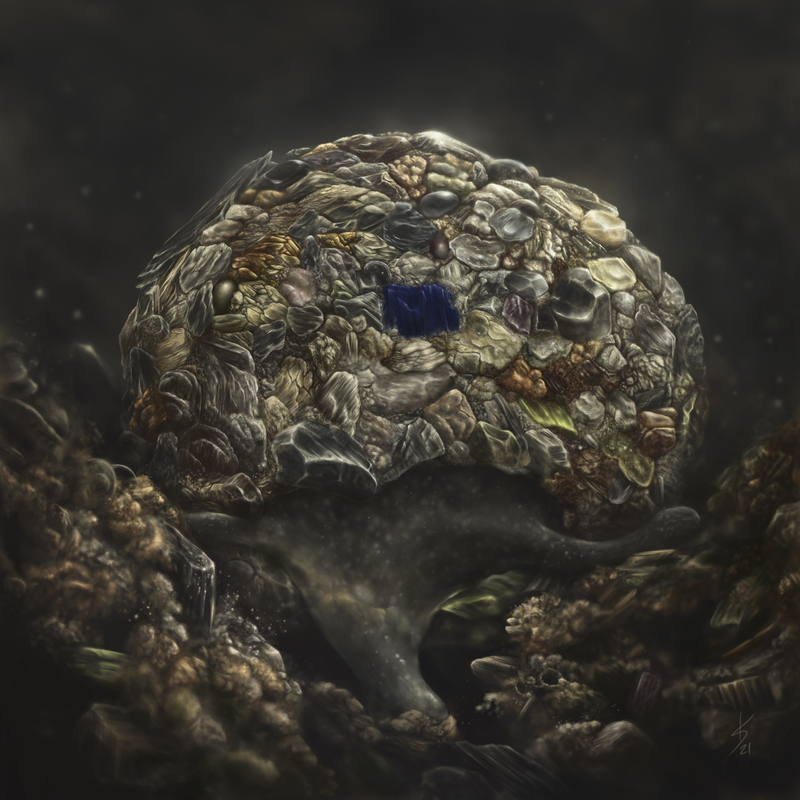
Difflugia with microplastic
This amoeba is easy to miss unless the eye is trained to notice that certain clumps of debris are not like the others. This clump of debris is actually a shell, or "test" of an amoeba in the genus Difflugia. It has constructed its home by gluing together bits and pieces from the environment around it, similar to the caddisfly larva.
This piece was inspired by a paper on microplastics in soil. The authors discussed the challenges of measuring plastic in soil, because there is currently no way to distinguish plastic from mineral particles in soil, and soil everywhere is now so polluted with plastic that researchers can't find any that is clean enough to test detection methods with.
"Unfortunately, there is no soil without plastic, no environmental blind sample to allow the finding of method limits." (source).
I started to wonder how these particles could be affecting microorganisms, and it turns out testate amoebas actually will use synthetic materials in their tests in lab experiments (source). It's not known whether testate amoebas are doing this in natural environments or if they show a preference for or against synthetic particles, but since we know they can and will use such materials, it's entirely possible that any Difflugia you see in the microscope could have glued bits of plastic into its shell.
My work is usually not emotionally driven, unless you count inspiration as emotion, but this one was different.
When I learned that even the soil is now so full of plastic they can't even develop ways to measure it, I felt defeated. At the time I was grieving the loss of the last little scrap of old forest near us, and it felt like there was no longer anywhere to find relief and simply enjoy the beauty and richness of nature. Not even in the microscope.
You might have noticed that the strong blue particle in the centre of the shell feels jarring or out of place. It constantly demands your attention, dragging your eyes back again and again when you try to look at the rest of the piece. This is of course, the obvious plastic particle, though any of the other pieces could be plastic too, and there would be no way to know.
This is a reflection of my relationship to nature now. I want to just observe and appreciate the intricate beauty of nature; trying to focus on the positive and enjoy what remains, but the gloomy big picture of reality is always there, stealing my attention, energy, and hope.
If you like this artwork, you can order a print of it here or support me on Ko-fi. For inquiries about DIY prints, licensing, commissions, collaborations or just to share enthusiasm about microbes, please email post@mikroliv.no, or send a message on Instagram. I love hearing from you!


